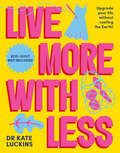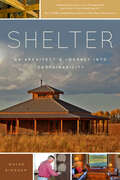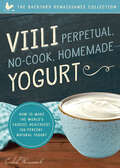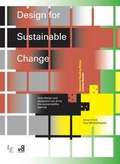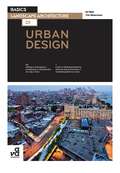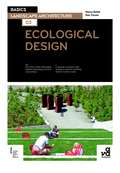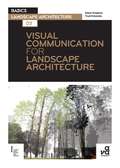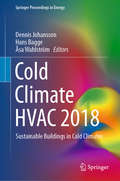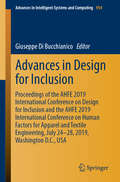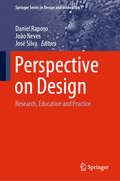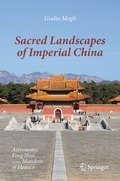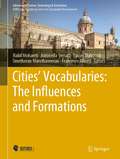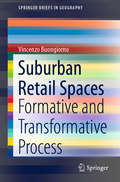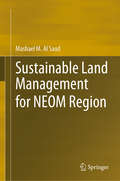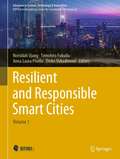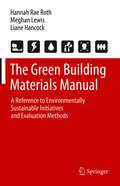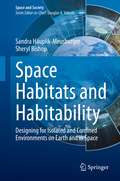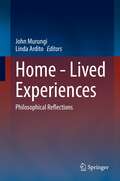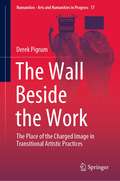- Table View
- List View
Green Lewisham: Our treasured open spaces
by Candy BlackhamIn Green Lewisham we are invited to explore the surprisingly numerous green spaces in the Borough of Lewisham in south east London. Rivers, trees, grassy glades and wildlife are round almost every corner, hidden between houses and alongside railway lines and all lying less than ten miles from Trafalgar Square in central London. We have a brief history behind the many calming and natural sites and the photographs tempt us to go walking every day, and at all times of the year, as the trees change from bare branches to green leaves and then the brilliant jewel-like colours of the autumn. Discover herons and egrets, swans, and many, many species of birds as well as the ever-present ring-necked parakeets. Walk along the centuries-old River Ravensbourne and its tributaries, or find stunning views of London from the hilltops. Lewisham is celebrated as the London Borough of Culture in 2022. Candy Blackham has given us a unique book which opens our eyes to appreciating and enjoying the natural, green spaces in this special year.
Leo's Guide to Not Becoming a Statistic: How to Prevent Crime & What to Do in a Situation
by Leo PrinslooIf this book saves just one person’s life, Leo Prinsloo will be happy.Leo became a worldwide internet sensation after footage of his reaction to an attempted high-value goods-in-transit heist went viral. Stunned by his cool attitude and focused action in a crisis situation, South Africans had an example of what can happen when good people take a stand.With decades of experience in security – first as a policeman, then in the South African Police Service’s Special Task Force, and now providing arms handling and security training in the private sector – Leo has a wealth of knowledge on how to manage life-threatening incidents.Driven by a desire to empower South Africans and help them claim back their sense of safety, he offers advice for dealing with every risky situation, from how to handle hijackings and road rage, to how to keep your children safe, to the best way to secure your home and business. He also provides comprehensive information about handling firearms and basic first aid.Leo’s Guide to Not Becoming a Statistic is a guide to living your safest life in South Africa – something which has become increasingly important as our crime statistics continue to rise. Straight-talking and honest – much like Leo himself – it is an easy to use manual that makes keeping safe accessible, with relatable information and easy to implement tips.Leo says that taking the first step towards securing your safety is the most important, and his book will help you take that step.
Live More with Less: Upgrade your life without costing the Earth!
by Kate LuckinsDrop the eco-guilt and create the sustainable lifestyle you want!Sustainability leader Dr Kate Luckins knows how striving for eco-perfection sets us up for failure. She encourages everyone to act on climate change by living their own shade of green instead.Live More with Less is a practical and optimistic guide to balancing planet friendly habits with our imperfect reality. It's filled with entertaining anecdotes from sustainability leaders and everyday eco-heroes, as well as handy tips to reduce consumerism and your mental load. It steps you through elevating your wardrobe, cutting your grocery bills and restoring the joy of Christmas with ease. This book is for anyone wanting to make confident, sustainable choices to upgrade their life - for good.
Shelter: An Architect's Journey into Sustainability
by Wayne BinghamAfter being trained and practicing conventional glass, steel, and concrete architecture for thirty years, an award-winning architect discovers the concept of sustainable living and embarks on a journey that ends with his own strawbale home at the foot of the Grand Tetons.
Viili Perpetual, No-Cook, Homemade Yogurt: How to Make the World's Easiest, Healthiest, 100-Percent Natural Yogurt
by Caleb WarnockLearn how to make your own Viili yogurt at home! With the history behind, health benefits of, and recipes using Viili yogurt, you will have all you need to make Viili part of your diet.
Herbal Beauty: All-Natural Skin, Body, and Hair Care
by Caleb Warnock Kirsten SkirvinLearn the natural way to care for your skin and hair! Herbal Beauty has recipes to help enhance your natural beauty.
Growing a Permaculture Food Forest: How to Create a Garden Ecosystem You Only Plant Once But Can Harvest for Years (Backyard Renaissance Ser.)
by Caleb WarnockSelf-sufficiency expert Caleb Warnock shares his expertise in creating a permaculture food forest: a garden that you plant once and then leave in the hands of Mother Nature for years to come.
Design For Sustainable Change (PDF)
by Anne Chick Paul MicklethwaiteDesign for Sustainable Change explores how design thinking and design-led entrepreneurship can address the issue of sustainability, examining how familiar design processes can be translated into methodologies for driving sustainable change in businesses, organisations and society more generally. It discusses the ways in which design thinking is evolving and being applied to a much wider spectrum of social and environmental issues, beyond its traditional professional territory. The result is designers themselves evolving, and developing greater design mindfulness in relation to what they do and how they do it. This book looks at design thinking as a methodology which, by its nature, considers issues of sustainability, but which does not necessarily seek to define itself in those terms. It explores the gradual extension of this methodology into the larger marketplace and the commercial and social implications of such an extension.
The Fundamentals of Landscape Architecture (Fundamentals)
by Tim WatermanThe Fundamentals of Landscape Architecture provides an introduction to the key elements of this broad field. From climate change to sustainable communities, landscape architecture is at the forefront of today's most crucial issues. This book explains the process of designing for sites, calling upon historical precedent and evolving philosophies to discuss how a project moves from concept to realization. It serves as a guide to the many specializations within landscape architecture, such as landscape strategy and urban design.
Basics Landscape Architecture 01: Urban Design (Basics Landscape Architecture)
by Tim Waterman Ed WallBasics Landscape Architecture 01: Urban Design seeks to define and describe the role played by landscape architecture in urban design, an interdisciplinary practice that is concerned with defining the form of human settlements.It provides a brief history and definition of urban design and the roles of the various professions involved.Urban Design looks at the elements of urban form and the importance of contextual details, from the scale of the city and its region to the importance of materials.The text uses case studies to explore the philosophies and methodologies of urban design and to explain the importance of of urban design to landscape architecture and, in turn, the importance of landscape architecture to urban design.
Basics Landscape Architecture 02: Ecological Design (Basics Landscape Architecture)
by Nancy Rottle Ken YocomBasics Landscape Architecture 02: Ecological Design provides an overview of ecological design and planning for landscape architects. It explores the concepts and themes important to the contemporary practice of ecological design and planning in a highly accessible and richly illustrated format. Focusing primarily on urban environments, this book examines the relationships between ecological design theory and design methods. It describes and illustrates the basic structures and functions of natural and human systems through landscape ecology principles and the dynamics of landscape processes.
Visual Communication for Landscape Architecture (Basics Landscape Architecture)
by Trudi Entwistle Edwin KnightonVisual Communication for Landscape Architecture demonstrates not only how and where a range of visual communication skills are needed to inform a design process, but also why they are essential in order to make presentations both informative and memorable. It illustrates how representational techniques can be sensitively applied in different contexts appropriate to a diverse range of design challenges, and encourages experimentation with contemporary techniques, both 2D and 3D. Developing a professional but creative design portfolio is explored in relation to creating e-portfolios and websites.A total of 12 contemporary case studies enable readers to contextualize the methods and techniques explored in each chapter through exploring real-life examples of winning projects by successful landscape architecture practices, making this title an inspirational resource for both budding – and practising – landscape architects.
Cold Climate HVAC 2018: Sustainable Buildings In Cold Climates (Springer Proceedings in Energy)
by Dennis Johansson Hans Bagge Åsa WahlströmThis volume presents the proceedings of the 9th Cold Climate HVAC conference, which was held in Kiruna, Sweden in 2018. The conference highlighted key technologies and processes that allow scientists, designers, engineers, manufacturers and other decision makers in cold climate regions to achieve good indoor environmental quality (IEQ) with a minimum use of energy and other resources. The conference addressed various technical, economic and social aspects of buildings and HVAC systems in new and renovated buildings. This proceedings volume gathers peer-reviewed papers by a diverse and international range of authors and showcases perspectives and practices in cold climate building design from around the globe. The following major aspects, which include both fundamental and theoretical research as well as applications and case studies, are covered: (1) Energy and power efficiency and low-energy buildings; (2) Renovating buildings; (3) Efficient HVAC components; (4) Heat pumps and geothermal systems; (5) Municipal and city energy systems; (6) Construction management; (7) Buildings in operation; (8) Building simulation; (9) Reference data; (10) Transdisciplinary connections and social aspects; (11) Indoor environments and health; (12) Moisture safety and water damage; (13) Codes, regulations, standards and policies; and (14) Other aspects of buildings in cold climates.
Advances in Design for Inclusion: Proceedings of the AHFE 2019 International Conference on Design for Inclusion and the AHFE 2019 International Conference on Human Factors for Apparel and Textile Engineering, July 24-28, 2019, Washington D.C., USA (Advances in Intelligent Systems and Computing #954)
by Giuseppe Di BucchianicoThis book addresses a range of topics in design, such as universal design; design for all; digital inclusion; universal usability; and accessibility of technologies regardless of users’ age, financial situation, education, geographic location, culture and language. It especially focuses on accessibility for people with auditory, cognitive, neurological, and visual impairments, ageing populations, and mobility for those with special physical needs. The book explores some of the overlaps between inclusive design and web accessibility to help managers, designers, developers, policy makers, and researchers optimize their efforts in these areas. Based on the AHFE 2019 International Conference on Design for Inclusion, held on July 24-28, held in Washington D.C., USA, it discusses new design technologies and highlights the disparate needs of the individuals within a community. Thanks to its multidisciplinary approach, it provides readers with various backgrounds with a timely, practice-oriented guide to design for inclusion.
Perspective on Design: Research, Education and Practice (Springer Series in Design and Innovation #1)
by Daniel Raposo João Neves José SilvaThis book presents the outcomes of recent endeavors that are expected to foster significant advances in the areas of communication design, fashion design, interior design, and product design, as well as overlapping areas. The fourteen chapters highlight carefully selected contributions presented during the 6th EIMAD conference, held on February 22–23, 2018 at the School of Applied Arts, Campus da Talagueira, in Castelo Branco, Portugal. They report on outstanding advances that offer new theoretical perspectives and practical research directions in design, and which are aimed at fostering communication in a global, digital world, while also addressing key individual and societal needs.
Sacred Landscapes of Imperial China: Astronomy, Feng Shui, and the Mandate of Heaven
by Giulio MagliThis book analyses the magnificent imperial necropolises of ancient China from the perspective of Archaeoastronomy, a science which takes into account the landscape in which ancient monuments are placed, focusing especially but not exclusively on the celestial aspects. The power of the Chinese emperors was based on the so-called Mandate of Heaven: the rulers were believed to act as intermediaries between the sky gods and the Earth, and consequently, the architecture of their tombs, starting from the world-famous mausoleum of the first emperor, was closely linked to the celestial cycles and to the cosmos. This relationship, however, also had to take into account various other factors and doctrines, first the Zhao-Mu doctrine in the Han period and later the various forms of Feng Shui. As a result, over the centuries, diverse sacred landscapes were constructed. Among the sites analysed in the book are the “pyramids” of Xi’an from the Han dynasty, the mountain tombs of the Tang dynasty, and the Ming and Qing imperial tombs. The book explains how considerations such as astronomical orientation and topographical orientation according to the principles of Feng Shui played a fundamental role at these sites.
Cities’ Vocabularies: The Influences and Formations (Advances in Science, Technology & Innovation)
by Nabil Mohareb Antonella Versaci Yasser Mahgoub Sreetheran Maruthaveeran Francesco AlbertiThis book discusses several topics regarding different vocabularies, such as sacred architecture, heritage buildings, open spaces, landmarks, and street escapes, all of which have a direct influence on the city form. The city form is also affected by the indirect impact of the citizens themselves, for example their culture, which in turn depends on the arts, as can be seen and embodied in morals, paintings, media, digital art, and sculpture. The book also examines the fundamental elements that are responsible for the identity of the city. Presenting case studies that demonstrate the how implementing the concept of the responsibility of architecture and arts affects the development of our cities, the book offers a new approach that is based on the available features of a city and explores how planners and decision-makers can use these features to address the myriad problems that our cities are facing.
Suburban Retail Spaces: Formative and Transformative Process (SpringerBriefs in Geography)
by Vincenzo BuongiornoThis book derives from observations of the contemporary built environment and its contradictions. The suburban retail spaces, specifically the suburban shopping mall, and the changes caused by them within urban organisms are the object of the investigation synthesized in the volume. The topic is very crucial for the development of the contemporary city. It constitutes at the same time a problem (large commercial structures' spread is 'destroying' traditional commercial urban fabrics) and an opportunity (shopping malls are the most vital parts of the new suburbs and can play the role of community nucleus in urban and suburban areas). Furthermore, the spread of e-commerce forces these structures to functional and spatial transformations that brings also a new relationship with the city.The analytical reading, supplemented by generative and design projections, is carried out by using the conceptual and methodological tools of urban morphology, specifically those of the typological processual approach. From this specific point of view, the suburban shopping mall is read as an organism (a complex system characterized by mutual solidarity and interdependence among component elements) in itself, and as a sub-organisms belonging to the largest territorial organism.The book is intended to offer, to operators, scholars, researchers, professionals and students, a reading and design method, to interpret an important aspect of the contemporary built environment by analyzing the suburban commercial space case. It offers at the same time a model applicable to other specific not-commercial cases, to defining paths for further research and design developments.
Sustainable Land Management for NEOM Region
by Mashael M. Al SaudThis book is the first of its type on NEOM Region, NW of Saudi Arabia. This region has been designated in 2017 to be an international economic hub. However, no studies have been done on this region which occupies several natural resources including remarkable landscape with unique ecological species, ores and water resources. The region is also vulnerable to many aspects of threatening natural hazards.Based on her expertise, namely geomorphological processes, earth sciences, space techniques and natural risk assessment, the author made an initiative to produce this book using advanced tools, specifically satellite images and geo-information system. The book introduces several thematic maps obtained for the first time for NEOM Region. Hence, it represents a scientific guide for land management and urban planning approaches. This book is a very significant document for a variety of readers and researchers including decision makers, land managers and planners, as well as geographers and geologists. In addition, the basic concepts and new approaches attract researchers and academic teams including students, universities and research centers not only in Saudi Arabia, but in different parts of the World.
Resilient and Responsible Smart Cities: Volume 1 (Advances in Science, Technology & Innovation)
by Norsidah Ujang Tomohiro Fukuda Anna Laura Pisello Dinko VukadinovićThis book focuses on the ways in which resiliency can foster the transformation of cities. There is a growing need for our cities to be transformed into “smart” cities; in this regard, tremendous efforts are called for in order to face the environmental challenges that play a major role in the creation or transformation of cities and environments. This book covers a broad range of applications and approaches that are “smart” and “resilient,” which, when combined, offer much more flexibility concerning the future of our cities. Consequently, this simple combination, which is producing sweeping changes around the globe, has attracted considerable attention from scholars and decision-makers alike.
The Green Building Materials Manual: A Reference to Environmentally Sustainable Initiatives and Evaluation Methods
by Hannah Rae Roth Meghan Lewis Liane HancockEvaluating building materials for environmental sustainability is a complex prospect. How do governmental agencies and the design industry actually measure sustainable initiatives and environmental impacts? This book breaks down the technical vocabulary and principles that define environmentally sustainable choices across interior and exterior architectural products to help the reader understand: Material ingredient selectionEnergy and water useEmissions, including greenhouse gasesHuman health and toxicitySocial accountability assessment This guide explains the structure of green certifications, standards and ecolabels, life cycle assessment, environmental regulations, and more. It presents a historic timeline for context and a snapshot of current trends and future objectives. It is a comprehensive reference for interior designers, architects, building owners, contractors, and students enrolled in interior design and architecture.
Space Habitats and Habitability: Designing for Isolated and Confined Environments on Earth and in Space (Space and Society)
by Sandra Häuplik-Meusburger Sheryl BishopThis book explores creative solutions to the unique challenges inherent in crafting livable spaces in extra-terrestrial environments. The goal is to foster a constructive dialogue between the researchers and planners of future (space) habitats. The authors explore the diverse concepts of the term Habitability from the perspectives of the inhabitants as well as the planners and social sciences.The book provides an overview of the evolution and advancements of designed living spaces for manned space craft, as well as analogue research and simulation facilities in extreme environments on Earth. It highlights how various current and future concepts of Habitability have been translated into design and which ones are still missing. The main emphasis of this book is to identify the important factors that will provide for well-being in our future space environments and promote creative solutions to achieving living spaces where humans can thrive. Selected aspects are discussed from a socio-spatial professional background and possible applications are illustrated.Human factors and habitability design are important topics for all working and living spaces. For space exploration, they are vital. While human factors and certain habitability issues have been integrated into the design process of manned spacecraft, there is a crucial need to move from mere survivability to factors that support thriving. As of today, the risk of an incompatible vehicle or habitat design has already been identified by NASA as recognized key risk to human health and performance in space. Habitability and human factors will become even more important determinants for the design of future long-term and commercial space facilities as larger and more diverse groups occupy off-earth habitats. The book will not only benefit individuals and organizations responsible for manned space missions and mission simulators, but also provides relevant information to designers of terrestrial austere environments (e.g., remote operational and research facilities, hospitals, prisons, manufacturing). In addition it presents general insights on the socio-spatial relationship which is of interest to researchers of social sciences, engineers and architects.
Home - Lived Experiences: Philosophical Reflections
by John Murungi Linda ArditoThis book explores the lived experience of being at home as well as being homeless. Being at home or not is typically a matter of being at a place or not, where such a place is carved out of space and designated as such. It is a place that is both empirical and trans-empirical. When one is at home or not at home, one typically has in mind an inhabited place. To inhabit or not to inhabit it is to find oneself in a place that has an affective presence or absence. In either case, affectivity points to a lived place where lived experience is constituted and displayed. Thus, in this context, affectivity becomes more than the subject of empirical psychology. If psychology were to have access, it would be in the context of phenomenological or existential psychology – a psychology that has its roots in the sensible world and, hence, a psychology that expresses an aesthetic dimension. Each of the contributors in this book extends an invitation to the readers to participate in constituting, extending, and sharing with others the sense of either being at home or of being homeless. This book appeals to students, researchers as well as general interest readers.
The Wall Beside the Work: The Place of the Charged Image in Transitional Artistic Practices (Numanities - Arts and Humanities in Progress #17)
by Derek PigrumThis book is about the way artists generate an endless chain of substitute objects for something they can never quite find. It explores the work involved in art with a focus upon finding, gathering, and assembling charged and auratic objects on the wall beside the work. The author employs the term Das Gegenwerk or the work towards the work. This concept avoids definitive closure and expands the notion of drafting and related practices to include qualitative research methods. The multi-mode transitional practices of Das Gegenwerk are devoid of any demand for a preconceived goal but instead hinge upon the provisional and indeterminate. As such, it is a far cry from the binary logic of the computer and the design cycle but is of interest to an audience engaged with both. Das Gegenwerk hinges on our capacity to respond to the outside rather than the inwardness often attributed to creative agency. A fundamental belief of the book is that by investigating and adapting the practices of expert practitioners, we can gain an understanding of high-level creativity. It is neither a recipe nor a linear or cyclic approach. Rather, artistic creation is an interweave of transitional multi-mode practices where the overriding emphasis is on the handling or habituation of transitional materials in physical place. The author addresses the urgent need to provide a balance between the promise of new technology and our capacity to both respond to and work with what the world bestows.


